Science Rendezvous Kingston doesn’t need to end on May 13! If you are interested in learning more about some of the topics covered by our booths, have a look at these book lists prepared by Queen’s University Faculty of Education Library.
The lists include books in English and French and are a wonderful resource to keep Science Rendezvous alive for the full year.
English: Bees | Berries, Three Sisters, & Wild Rice | Chemistry | Climate Crisis | Coding | Dinosaurs | Heart-Lungs | Oceans | Rocks-Minerals | Solar-System-Eclipses | Think-Like-a-Scientist
French: Anatomie et le corps humain | Astronomie et système solaire | Le climat et l'écologie | L'eau, la mer et l'océan | Pédagogie et apprentissage autochtone | Penser comme un.e scientifique
| Book | |
|---|---|
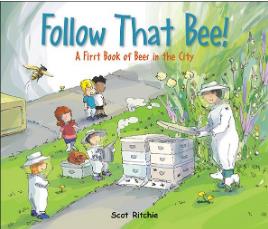 |
Follow That Bee: A First Book of Bees in the City, by Scot Ritchie |
| Published by Kids Can Press, 2019 | |
| Ages 4-7 | |
| From the publisher: “This playful book mixes narration, facts and appealing illustrations to introduce young children to why the world needs bees, and how people can help them thrive. It’s part of the critically acclaimed Exploring Our Community series.” |
|
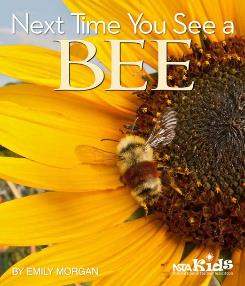 |
The Next Time You See a Bee, by Emily Morgan |
| Published by National Science Teaching Association, 2019 | |
| Ages 5-8 | |
| From the publisher: “This book will help kids understand why there’s so much buzz about bees. Next Time You See a Bee reveals the big impact these little insects have on the world. The book also introduces readers to the wide variety of North America’s native bee species, discusses why bees are threatened, and shares what readers can do to help.” |
|
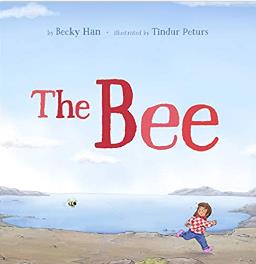 |
The Bee, by Becky Han & Tindur Peturs (ill.) |
| Published by Inhabit Media, 2021 | |
| Ages 6-8 | |
| From the publisher: “When the narrator of this fun and silly book is startled by the buzzing of a bee, she sets off on an adventure that sees her running from community to community, trying to lose her buzzing companion. When she has run clear across Nunavut, she finally realizes that perhaps this little bee isn’t such a fearsome foe after all.” |
|
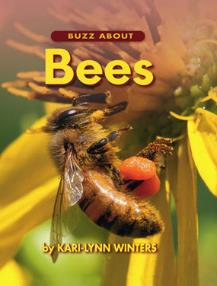 |
Buzz About Bees, by Kari-Lynn Winters |
| Published by Fitzhenry & Whiteside, 2013 | |
| Ages 8-12 | |
|
From the publisher: |
|
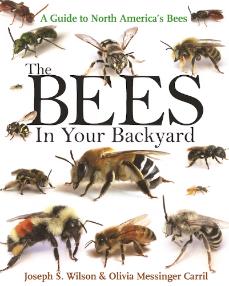 |
The Bees in Your Backyard, by Joseph S. Wilson & Olivia Messinger Carril |
| Published by Princeton University Press, 2015 | |
| Ages General readers | |
| From the publisher: “The Bees in Your Backyard provides an engaging introduction to the roughly 4,000 different bee species found in the United States and Canada, dispelling common myths about bees while offering essential tips for telling them apart in the field.” |
| Book | |
|---|---|
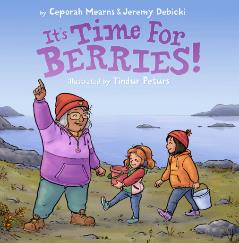 |
It’s Time For Berries! by Ceporah Mearns, Jeremy Debicki & Tindur Peturs (ill.) |
| Published by Inhabit Media, 2020 | |
| Ages 4-7 | |
| It’s Time For Berries! by Ceporah Mearns, Jeremy Debicki & Tindur Peturs (ill.) Published by Inhabit Media, 2020 Ages 4-7 From the publisher: “Two sisters have waited all spring and summer to pick berries with their ningiuq, their grandmother. They've gone fishing, dug for clams, and by the time late summer arrives, it's finally time for berries!” |
|
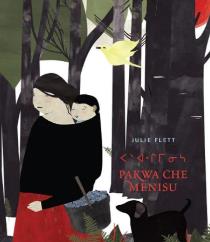 |
Pakwa Che Menisu Wild Berries, by Julie Flett & Jennifer Thomas |
| Published by Simply Read Books, 2013 | |
| Ages 4-8 | |
| From GoodMinds.com: “A young boy named Clarence spends a summer day picking wild blueberries with his grandmother in this beautiful new picture book by award-winning illustrator Julie Flett. Exploring the important tradition of berry-picking, the story is written completely in the Cree language in both Syllabics and Roman Orthography.” |
|
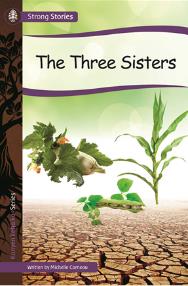 |
Strong Stories Kanyen’keha:ka: The Three Sisters, by Michelle Corneau |
| Published by Strong Nations, 2016 | |
| Ages 7-9 | |
| From the publisher: “A long time ago, the land was very dry and no plants could grow. The people had become very hungry. The Creator heard the people and made three plants - Corn, Beans and Squash. This Kanyen'kehà:ka (Gan-yeh-ga-ha-ga) story is about how the Three Sisters saved the people then, and are still feeding people today!” |
|
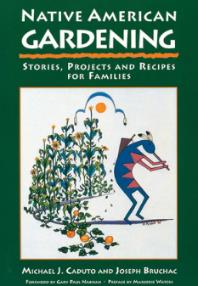 |
Native American Gardening, by Michael J. Caputo & Joseph Bruchac |
| Published by Fulcrum Publishing, 1996 | |
| Ages 8 and up | |
|
From GoodMinds.com: |
|
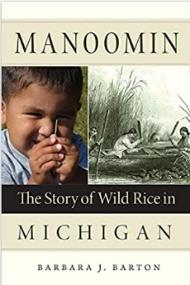 |
Manoomin, by Barbara Barton |
| Published by Michigan State University Press, 2018 | |
| Ages General readers | |
|
From the publisher: |
| Book | |
|---|---|
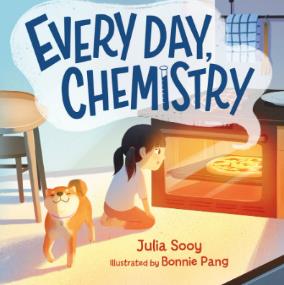 |
Everyday Chemistry, by Julia Sooey & Bonnie Pang |
| Published by Feiwel & Friends, 2021 | |
| Ages 4-8 | |
| From the publisher: “Science is all around us in our daily lives. Specifically, chemistry! When your bread toasts, when your shampoo foams, when the playground slide rusts--those are all chemical reactions. In this book, a mother and daughter expereince all these things and more as they go about their day, from when they wake up, to when they go to bed.” |
|
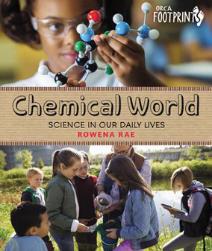 |
Chemical World: Science in our Daily Lives, by Rae Rowena |
| Published by Orca Book Publishers, 2020 | |
| Ages 9-12 | |
| From the publisher: “The goal of Chemical World: Science in our Daily Lives is to introduce readers to basic chemistry and chemical history, and to show how chemicals are used for particular reasons but sometimes turn out to be harmful to environmental and human health.” |
|
 |
Chemistry: Investigate the Matter that Makes Up Your World, by Carla Mooney & Samuel Carbaugh (ill.) |
| Published by Nomad Press, 2016 | |
| Ages 12-15 | |
| From the publisher: “Learn how these molecules combine to form ordinary objects such as the chair you’re sitting on, the water in your glass, even you! Through hands-on, investigative projects, readers delve into the world of chemical reactions and changing matter, learning how these principles are used in many areas of science from biochemistry to nuclear science.” |
|
 |
Chemistry at Home: Exploring the Ingredients in Everyday Products, by John Emsley. |
| Published by Royal Society of Chemistry, 2015 | |
| Ages General reader | |
|
From the publisher: |
|
 |
It’s Elemental: The Hidden Chemistry in Everything, by Kate Biberdorf |
| Published by Park Row, 2021 | |
| Ages General reader | |
| From the publisher: “In It's Elemental, Biberdorf demystifies the fundamental principles of the science that may have eluded you in high school and shows how chemistry comes alive in everything we do.” |
| Book | |
|---|---|
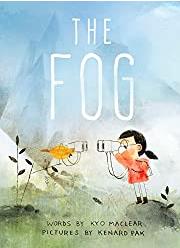 |
The Fog, by Kyo Maclear & Kenard Pak (ill.) |
| Published by Tundra Books, 2017 | |
| Ages 4-8 | |
| From the publisher: Warbler is worried when a mysterious fog rolls in to his island and no one seems to notice. “Kyo Maclear's witty story, brought to life with the delicate, misty artwork of Kenard Pak, is a poignant yet humorous reminder of the importance of environmental awareness.” |
|
 |
Old Enough to Save the Planet, by Loll Kirby & Adelina Lirius (ill.) |
| Published by Abrams Books, 2021 | |
| Ages 8-12 | |
| From the publisher: “The world is facing a climate crisis like we’ve never seen before. And kids around the world are stepping up to raise awareness and try to save the planet. As people saw in the youth climate strike in September 2019, kids will not stay silent about this subject—they’re going to make a change.” |
|
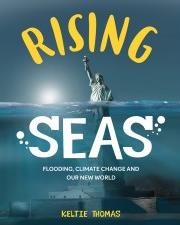 |
Rising Seas: Flooding, Climate Change and Our New World, by Keltie Thomas |
| Published by Firefly Books, 2018 | |
| Ages 9-13 | |
| From the publisher: “Rising Seas gives youth an eye-popping view of what the Earth might look like under the rising and falling water levels of climate change. Photographs juxtapose the present-day with that same area's projected future.” |
|
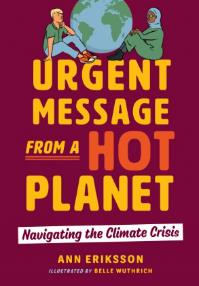 |
Urgent Message From a Hot Planet, by Ann Eriksson & Belle Wuthrich (ill.) |
| Published by Orca Book Publishers, 2020 | |
| Ages 12+ | |
|
From the publisher: |
|
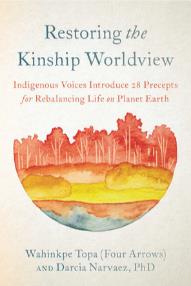 |
Restoring the Kinship Worldview, by Wahinkpe Topa & Darcia Narvaez |
| Published by Penguin Random House, 2022 | |
| Ages General readers | |
| From the publisher: “Indigenous worldviews, and the knowledge they confer, are critical for human survival and the wellbeing of future generations. Editors Wahinkpe Topa (Four Arrows) and Darcia Narvaez present 28 powerful excerpted passages from Indigenous leaders.” |
| Book | |
|---|---|
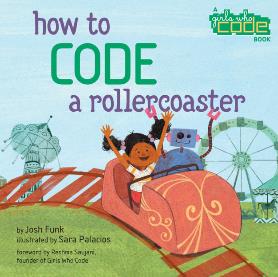 |
How to Code a Rollercoaster, by Josh Funk & Sara Palacios (ill.) |
| Published by Viking Books for Young Readers, 2019 | |
| Ages 4-8 | |
| From the publisher: “Through the use of code, Pearl and Pascal can keep track of their ride tokens and calculate when the line is short enough to get a spot on the biggest ride of them all--the Python Coaster. Variables, if-then-else sequences, and a hunt for a secret hidden code make this a humorous, code-tastic day at the amusement park!” |
|
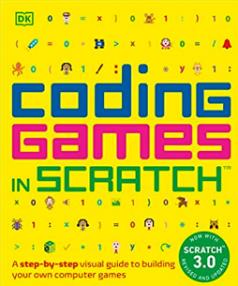 |
Coding Games in Scratch: A Step-by-Step Visual Guide to Building Your Own Computer Games, by Jon Woodcock |
| Published by Penguin Random House, 2019 | |
| Ages 7-10 | |
| From the publisher: “Coding is not only a highly sought-after skill in our digital world, but it also teaches kids valuable skills for life after school. This book teaches important strategies for solving problems, designing projects, and communicating ideas, all while creating games to play with their friends.” |
|
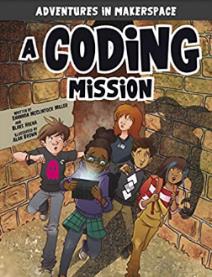 |
A Coding Mission, by Shannon McClintock Miller & Blake Hoena & Alan Brown (ill.) |
| Published by Stone Arch Books, 2018 | |
| Ages 8-10 | |
|
From the publisher: |
|
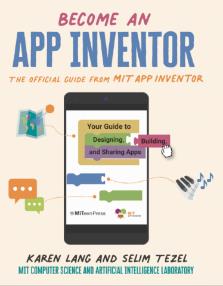 |
Become an App Inventor, by Karen Lang & Selim Tezel |
| Published by Candlewick Press, 2022 | |
| Ages 12-14 | |
|
From the publisher: |
|
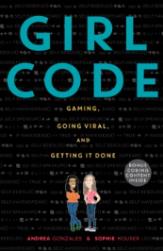 |
Girl Code: Gaming, Going Viral, and Getting it Done, by Andrea Gonzales & Sophie Houser |
| Published by HarperCollins, 2018 | |
| Ages 13-17 | |
| From the publisher: “Perfect for aspiring coders everywhere, Girl Code is the story of two teenage tech phenoms who met at Girls Who Code summer camp, teamed up to create a viral video game, and ended up becoming world famous.” |
| Book | |
|---|---|
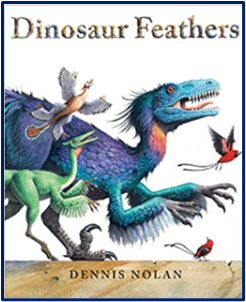 |
Dinosaur Feathers, by Dennis Nolan |
| Published by Neal Porter Books, 2021 | |
| Ages 6-9 | |
| From the publisher: “There were so many different species of dinosaurs. Large, monstrous, and fearsome, they ruled the earth. Until gradually, there were no dinosaurs left. But they didn't disappear completely. Some dinosaurs had feathers, which grew and grew...until all through the skies were hundreds of species of birds, which flew and flew. From Dennis Nolan comes a poetic nonfiction picture book about how dinosaurs evolved into birds.” |
|
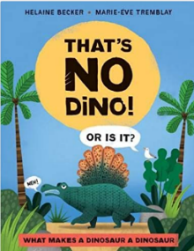 |
That’s No Dino! Or Is It? by Helaine Becker & Marie-Ève Tremblay (ill.) |
| Published by Kids Can Press, 2021 | |
| Ages 6-9 | |
| From the publisher: “Each funny, fact-packed spread presents one prehistoric creature, with a large illustration and information about its habitat, behavior and characteristics, including which characteristic makes it not a dinosaur |
|
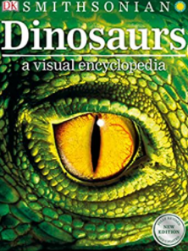 |
Dinosaurs: A Visual Encyclopedia 2nd ed, by DK staff |
| Published by DK Children, 2018 | |
| Ages 9-12 | |
| From the publisher: “Kids can go on a visual tour of the prehistoric world, exploring the plants, the reptiles, the swimmers, the flyers, the dinosaurs, the mammals, and more in this comprehensive and fully updated visual celebration of prehistoric life.” |
|
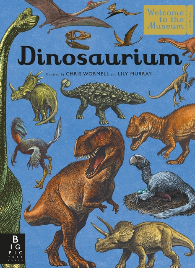 |
Dinosaurium, By Lily Murray & Chris Wormell (ill.) |
| Published by Big Picture Press, 2018 | |
| Ages 8-12 | |
|
From the publisher: |
|
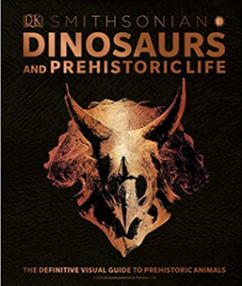 |
Dinosaurs and Prehistoric Life, by DK and Smithsonian Institution |
| Published by DK, 2019 | |
| Ages General readers | |
| From the publisher: “This richly illustrated catalog starts with the first Precambrian microbes and traces the evolution of life through mass extinctions and ice ages. As well as dinosaurs, it features extinct plants, invertebrates, amphibians, fish, birds, reptiles, and mammals, conjuring up a series of past worlds.” |
| Book | |
|---|---|
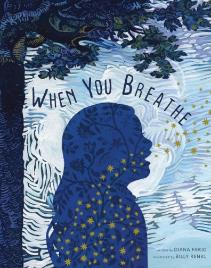 |
When You Breathe, by Diana Farid & Billy Renkl (ill.). |
| Published by Abrams Books, 2020 | |
| Ages 3-5 | |
| From the publisher: “In this beautiful book, breath—the very air, stardust, the grand molecules of the universe—blossoms in the upside-down tree in your rising chest, animating and enlivening you. And when you breathe out, you send your song out into the world.” |
|
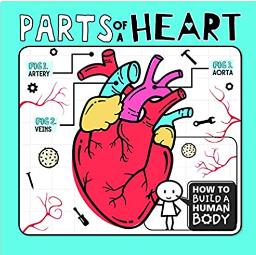 |
Parts of a Heart, by Kirsty Holmes |
| Published by Enslow Publishing, 2020 | |
| Ages 7-10 | |
| From the publisher: “With this stimulating book, readers take a close look at the four-chambered pump that keeps the blood circulating in their bodies. Colorful diagrams illustrate the different parts of the heart and help struggling readers understand the important processes this key body part performs.” |
|
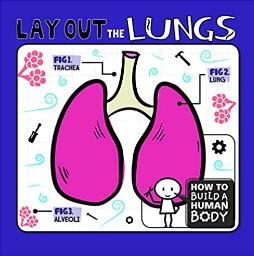 |
Lay Out the Lungs, by Kirsty Holmes |
| Published by Enslow Publishing, 2020 | |
| Ages 7-10 | |
| From the publisher: “For the most part, the lungs work automatically with little conscious effort from an individual. However, there are things that can be done to help keep them extra healthy. Readers will learn about these amazing organs through the help of accessible text and informative diagrams." |
|
 |
The Heart, by Seymour Simon |
| Published by HarperCollins, 2006 | |
| Ages 6-10 | |
| From the publisher: “As you walk, eat, and sleep, your heart continually pumps trillions of blood cells through thousands of miles of blood vessels inside your body. You may not be able to see your own heart, but all you have to do is look inside this book to see how this amazing organ works.” |
|
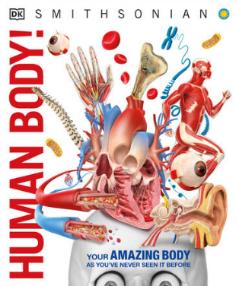 |
Knowledge Encyclopedia: Human Body, by DK with Smithsonian |
| Published by DK Children, 2017 | |
| Ages 9-12 | |
| From the publisher: “Informative, diverse in subject matter, easy-to-read and brimming with beautiful graphics, young learners can explore the incredibly detailed cross-sections and cutaways that reveal the inner workings of these fascinating and complex machines we know as our bodies.” |
| Book | |
|---|---|
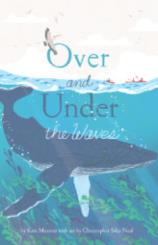 |
Over and Under the Waves, by Kate Messner& Christopher Silas Neal (ill.) |
| Published by Chronicle Books, 2022 | |
| Ages 5-8 | |
| From the publisher: In this book Messner explores the rich, interconnected ecosystem of the ocean. “Preservation of our wilderness—and of our oceans in particular—is essential, and this book makes such a great, upbeat jumping-off point for discussions of the importance and wonder of our world’s natural habitats and ecosystems.” |
|
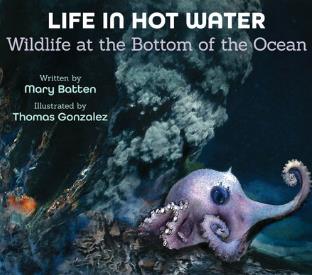 |
Life in Hot Water: Wildlife at the Bottom of the Ocean, by Mary Batten & Thomas Gonzalez (ill.) |
| Published by Peachtree, 2022 | |
| Ages 6-9 | |
| From the publisher: “A dramatic overview of the deep-sea extremophiles that thrive in scalding water and permanent darkness at the bottom of the ocean. Scientists are hard at work to learn more about the complex ecosystems of the ocean depths.” |
|
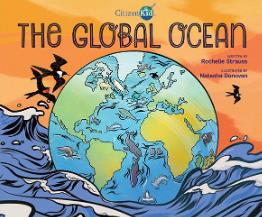 |
The Global Ocean, by Rochelle Strauss & Natasha Donovan (ill.) |
| Published by Kids Can Press, 2022 | |
| Ages 8-12 | |
| From the publisher: “The global ocean is in trouble. This beautiful and important book explores the issues – and what we can do to help. Strauss applies a positive, proactive approach to the urgent topics of climate change and ocean conservation in this gorgeous and unique depiction of the global ocean, based on the most current ocean science research.” |
|
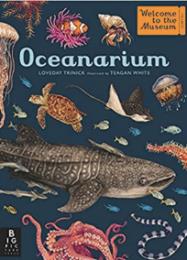 |
Oceanarium: Welcome to the Museum, by Loveday Trinick & Teagan White (ill.) |
| Published by Big Picture Press, 2022 | |
| Ages 8-12 | |
| From the publisher: “With expert text by marine biologist Loveday Trinick and stunning illustrations by Teagan White, travel the world from frozen Arctic seas to shimmering coral reefs, and learn why it is so important that we protect our oceans." |
|
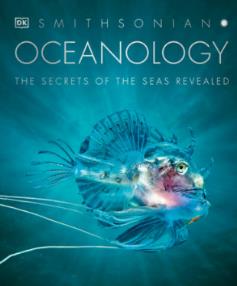 |
Oceanology: The Secrets of the Sea Revealed, by DK & Smithsonian |
| Published by DK, 2020 | |
| Ages 9-12 | |
| From the publisher: “Astounding photography reveals an abundance of life, from microscopic plankton to great whales, seaweed to starfish. Published in association with the Smithsonian Institution, the book explores every corner of the oceans, from coral reefs and mangrove swamps to deep ocean trenches.” |
| Book | |
|---|---|
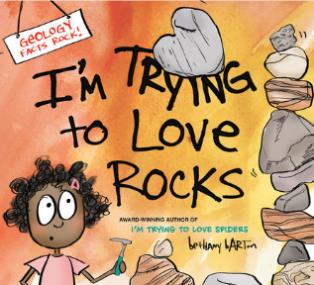 |
I’m Trying to Love Rocks, by Bethany Barton |
| Published by Viking Books for Young Readers, 2020 | |
| Ages 4-8 | |
| From the publisher: “From the Grand Canyon to volcanos to diamonds and fossils, geology--the study of rocks--shows us where we've been and where we're going. With tons of humor and scores of fascinating facts, Bethany Barton introduces younger readers to geology and why rocks matter . . . enough to write a whole book about them!” |
|
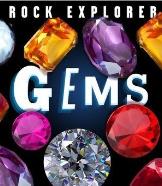 |
Gems, by Claudia Martin |
| Published by Quarto Publishing Group, 2018 | |
| Ages 6-8 | |
| From the publisher: “With stunning photographs and easy-to-follow captions, this book explains how different environments affect different gemstones and is full of fabulous, quirky facts such as: although most diamonds are formed underground, sometimes, they fall to Earth from space, inside rocks called meteorites.” |
|
 |
Minerals, by Claudia Martin |
| Published by Quarto Publishing Group, 2018 | |
| Ages 6-8 | |
| From the publisher: “With stunning photos on every page and informative, relevant captions, this book answers essential questions such as how and where minerals form; why some are rarer than others; how they are mined and how they are used to advance technology." |
|
 |
Rocks, by Claudia Martin |
| Published by Quarto Publishing Group, 2018 | |
| Ages 6-8 | |
| From the publisher: “Did you know there are three different kinds of rock—igneous, sedimentary, and metamorphic? Explore the reasons behind this and understand what our earth is made of and what processes make it a constantly changing environment in this highly accessible introduction to geology.” |
|
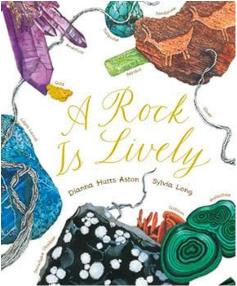 |
A Rock is Lively, by Dianna Hutts Aston & Sylvia Long (ill.) |
| Published by Chronicle Books, 2012 | |
| Ages 8-11 | |
| From the publisher: “From dazzling blue lapis lazuli to volcanic snowflake obsidian, an incredible variety of rocks are showcased in all their splendor. Poetic in voice and elegant in design, this book introduces an array of facts, making it equally perfect for classroom sharing and family reading.” |
| Book | |
|---|---|
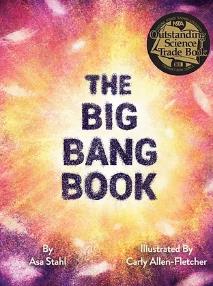 |
The Big Bang Book, by Asa Stahl & Carly Allen-Fletcher (ill.s) |
| Published by Creston Books, 2020 | |
| Ages 4-9 | |
| “Stahl ushers readers past the first second of the Big Bang through the transformation of plasma to matter, then the appearance of swirling galaxies and their stars and planets, and finally to a planet that's "just right" for "you. / And everyone else." | |
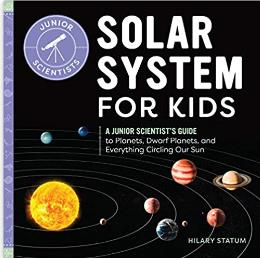 |
Solar System for Kids, by Hilary Statum |
| Published by Rockridge Press, 2020 | |
| Ages 6-8 | |
| From the publisher: “Solar System for Kids teaches you about the birth of the universe and how scientists believe galaxies, stars, and planets came into being. Explore the Sun, planets, dwarf planets, moons, and the asteroid belt in one of the most engaging solar system books for kids.” |
|
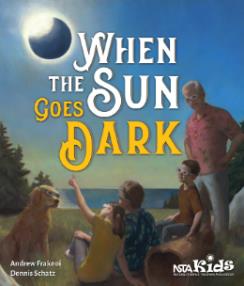 |
When the Sun Goes Dark, by Andrew Fraknoi & Dennis Schatz (ill.) |
| Published by National Science Teaching Association, 2017 | |
| Ages 9-12 | |
| From the publisher: “The book tells how two curious children and their grandparents re-create eclipses in their living room using a lamp, a tennis ball, two Hula Hoops, and table tennis balls. Later, in the backyard and around the house, the family explores safe ways to view a solar eclipse and ponder phenomena from sunspots to phases of the Moon." |
|
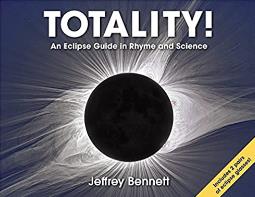 |
Totality! An Eclipse Guide in Rhyme and Science, by Jeffrey Bennett |
| Published by Big Kid Science, 2022 | |
| Ages 9-12 | |
| From the publisher: “Totality! An Eclipse Guide in Rhyme and Science features a unique combination of rhyme and science that makes it suitable for readers of all ages, as well as parents and teachers. The engaging rhyme, with a couplet on each page, has been pedagogically constructed to serve as a mnemonic device for the underlying science, which is further explained through beautiful illustrations and ‘Big Kid Box’ sidebars.” |
|
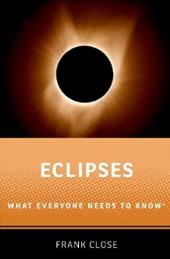 |
Eclipses – What Everyone Needs to Know, by Frank Close |
| Published by Oxford University Press, 2019 | |
| Ages General readers | |
| From the publisher: “[Eclipses] covers eclipses of sun, moon, and other astronomical objects, and their applications in science, as well as their role in history, literature, and myth. It describes the phenomena to expect at a solar eclipse and the best ways to record them--by camera, video, or by simple handmade experiments.” |
| Book | |
|---|---|
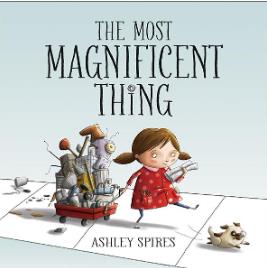 |
The Most Magnificent Thing, by Ashley Spires |
| Published by Kids Can Press, 2013 | |
| Ages 3-7 | |
| From the publisher: “This funny book offers a perfect example of the rewards of perseverance and creativity. The girl’s frustration and anger are vividly depicted in the detailed art, and the story offers good options for dealing honestly with these feelings, while at the same time reassuring children that it’s okay to make mistakes.” |
|
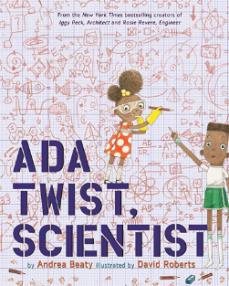 |
Ada Twist, Scientist, by Andrea Beaty & David Roberts |
| Published by Abrams Books, 2016 | |
| Ages 5-7 | |
| From the publisher: “Ada Twist’s head is full of questions. Like her classmates Iggy and Rosie Ada has always been endlessly curious. Even when her fact-finding missions and elaborate scientific experiments don’t go as planned, Ada learns the value of thinking through problems and continuing to stay curious.” | |
 |
Exemplary Evidence, by Jessica Fries-Gaither |
| Published by National Science Teaching Association, 2018 | |
| Ages 7-9 | |
| From the publisher: If you think of science as a puzzle, you’ll see that data is a key to unlocking it. Exemplary Evidence: Scientists and Their Data touches on the world’s many riddles—from how we see to what’s at the bottom of the ocean. It shares how scientists have solved such puzzles by collecting measurements, taking notes, and even making sketches.” |
|
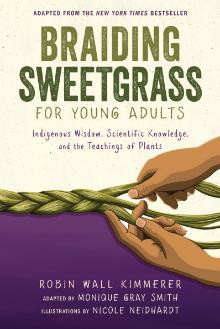 |
Braiding Sweetgrass for Young Adults: Indigenous Wisdom, Scientific Knowledge, and the Teachings of Plants by Robin Wall Kimmerer; adapted by Monique Gray Smith; Nicole Neidhardt (ill.) |
| Published by Zest Books, 2022 | |
| Ages 12-18 | |
| From the publisher: “With informative sidebars, reflection questions, & art [Braiding Sweetgrass] brings Indigenous wisdom, scientific knowledge, & the lessons of plant life to a new generation.” |
|
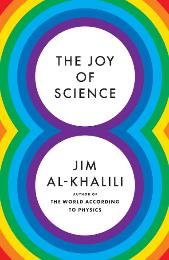 |
The Joy of Science, by Jim Al-Khalili |
| Published by Princeton University Press, 2022 | |
| Ages General readers | |
| From the publisher: “Today’s world is unpredictable and full of contradictions, and navigating its complexities while trying to make the best decisions is far from easy. The Joy of Science presents 8 short lessons on how to unlock the clarity, empowerment, and joy of thinking and living a little more scientifically.” |
French Titles
| Book | |
|---|---|
 |
Prêt pas prêt : les poumons |
| Ciné Fête, 2007 (DVD) | |
| Âges : 9-15 | |
| L’animateur Alexandre Morais nous explique comment les poumons sont utiles et quel rôle ils jouent dans notre respiration. Avec l’aide de deux reporters, Lucien et Eva, mais aussi avec la participation de deux jeunes et d’un mime très ingénieux, PEP, nous allons faire la rencontre d’une plongeuse sous-marine, d’un joueur de cornemuse, d’une joueuse de trompette, d’un coureur sur piste et d’une jeune fille adepte de yoga. | |
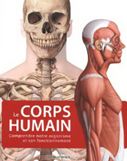 |
Le corps humain : comprendre notre organisme et son fonctionnement par Serge D’Amico et Anouk Noël (illustrations) |
| Éditions QuébecAmérique, 2012 | |
| Âges : 12-18 | |
| Outil de référence pour découvrir ou réviser la biologie humaine, que vous soyez étudiant ou simplement curieux de nature. | |
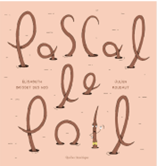 |
Pascal le poil par Élizabeth Brisset des Nos et Julien Roudaut (illustrations) |
| Éditions QuébecAmérique, 2021 | |
| Âges : 4 ans + | |
| Pascal est sociable et ouvert d'esprit; Pascal est aussi un poil, un poil d'avant-bras! Il aime discuter philosophie et comprendre la réalité des poils qui l'entourent. Quand un poil de dos pique sa curiosité, Pascal met tout en oeuvre pour le rencontrer. Un poil aussi vigoureux et inattendu a sans doute plein d'idées et d'expériences à partager! Un livre surprenant qui permet de découvrir les fonctions des poils corporels en rigolant! | |
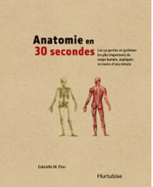 |
Anatomie en 30 secondes : Les 50 parties et systèmes les plus importants du corps humain par Gabrielle M. Finn et Judith Barbaro-Brown. Traduit par Laurence Le Charpentier |
| Éditions Hurtubise, 2013 | |
| Âges : 12-18 ans | |
| Les 50 parties et systèmes les plus importants du corps humain, expliqués en moins d'une minute |
| Book | |
|---|---|
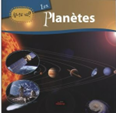 |
Les planètes par Marie-Ève Poirier |
| Publié par Les Éditions Les Malins, 2012 | |
| Âges: 4-8 ans | |
| Ce livre de la collection As-tu vu? présente une foule d'information sur l'univers qui t'entoure. Ouvre ce livre et découvre une tonne de choses sur les planètes tout en t'amusant! | |
 |
Les planètes par Agnès Vandewiele et Emilie Beaumont |
| Publié par Fleurus, 2017 | |
| Âges : 5-9 ans | |
| Une présentation des planètes du système solaire complétée d'une initiation à l'astronomie, notamment sur la théorie du big bang. | |
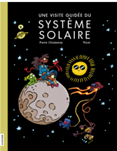 |
Une visite guidée du système solaire par Pierre Chastenay et Thom (illustrations) |
| Publié par La courte échelle, 2021 | |
| Âges : 8-12 ans | |
| Finaliste : Priz Mélèze (Forêt de la lecture) | |
| Dans ce documentaire aussi amusant qu’instructif, les enfants sont invités à suivre Stella, la guide terrienne, et ses touristes extraterrestres dans une visite guidée du système solaire. Cette visite leur permettra de découvrir non seulement le Soleil et ses huit planètes, mais aussi des lunes, des planètes naines, des astéroïdes et des comètes. | |
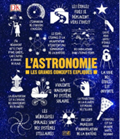 |
L’astronomie : les grands concepts expliqués par Jacqueline Mitton, David W. Hughes, Robert Dinwiddie, Penny Johnson & Tom Jackson |
| Publié par Marcel Didier, 2018 | |
| Âges : 8-12 ans | |
| Ce documentaire offre au lecteur des explications claires et concises. Le texte est accompagné de nombreux schémas expliquant les théories complexes, d'une sélection des citations qui ont marqué l'histoire de cette discipline et d'illustrations attrayantes qui facilitent notre compréhension. Voici enfin un ouvrage accessible et complet qui explique simplement les grands concepts de l'astronomie. |
| Book | |
|---|---|
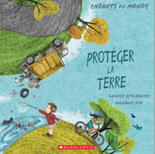 |
Protéger la Terre par Louise Spilsbury, Hanane Kai (illustrations), Marie-Josée Brière (traduction). |
| Éditions Scholastic, 2021 | |
| Âges : 6-9 ans | |
| La planète bleue. Gaia. Terra. Voici quelques-uns des surnoms de notre belle planète. Malgré ces nombreuses appellations, il n’y a qu’une seule Terre. Des minuscules insectes que l’on rencontre en forêt aux énormes baleines nageant dans l’océan, elle apporte à tous ses habitants les ressources nécessaires à la vie. Mais notre planète est en danger, et nous devons la sauver! | |
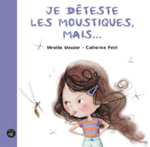 |
Je déteste les moustiques, mais … par Mireille Messier et Catherine Petit (illustrations) |
| Éditions de l’Isatis, 2022 | |
| Âges : à partir de 2 ans | |
| S’il est vrai que les moustiques peuvent gâcher une belle journée d’été, ils sont aussi utiles et nécessaires à la vie. Alors on les endure, même si eux nous aiment trop ! Bzz-bzz-bzz ! | |
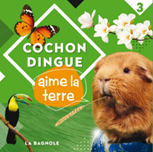 |
Cochon Dingue aime la terre par Karine Lachapelle, Marijo Meunier, et Luc Michaud. Tristan Demers (illustrations) |
| Les Éditions la Bagnole, 2020 | |
| Âges : 6-8ans | |
| Cet opus présente la Terre, sa place dans le système solaire et des expressions qui lui sont associées avant de présenter les journées où on la célèbre, ses grands écosystèmes, quelques animaux rares qui l’habitent, les grands explorateurs qui en ont fait le tour, les différentes couches du sol, les amis et ennemis du potager ou encore le travail des archéologues et les découvertes les plus impressionnantes faites dans l’eau ou le sol. | |
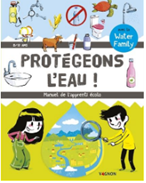 |
Protégeons l’eau! Manuel de l’apprenti écolo : par Water Family et Nicola Trève (illustrations) |
| Les Éditions Vagnon, Water Family, 2019 | |
| Âges : 8-12 ans | |
| Découvre l'essentiel pour comprendre l'importance de l'eau et les menaces qui pèsent sur elle, mais aussi les solutions que les hommes inventent pour la protéger. Car sans eau il n'y a pas de vie! Et pour continuer demain à profiter de ce trésor que l'on appelle "l'or bleu", c'est aujourd'hui qu'il faut agir, tous ensemble. | |
 |
100 idées écolos pour aider la planète par Valérie Ménard et Rachel Pilon (illustrations) |
| Les Éditions Petits Génies, 2021 | |
| Âges : 5-9 ans | |
| Savais-tu qu’il faut 600 000 litres d’eau pour faire vivre un habitant de la planète? Qu’un sac en plastique prend plus de 500 ans à se décomposer? Dans ce livre, tu découvriras 100 idées écolos pour économiser l’eau, réduire les gaz à effets de serre et diminuer ta consommation de déchets. Un livre ludique pour bien entamer ton virage vert! | |
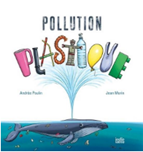 |
Pollution plastique par Andrée Poulin et Jean Morin (illustrations) |
| Éditions isatis, 2021 | |
| Âges 9-15 ans | |
| Dans l'histoire de la planète, il y a eu l'âge de pierre, suivi de l'âge du bronze et de l'âge du fer. Nous sommes maintenant à l'ère du plastique. Car on le retrouve partout. Partout. PARTOUT! Autant, le plastique est merveilleux, car il est léger, souple, résistant, autant il est une menace pour la planète et nos océans, ainsi que pour toutes les créatures qui y vivent. Pollution plastique est un documentaire complet, fouillé et des plus pertinents qui fait réfléchir sur notre dépendance au plastique et sur son impact environnemental. Il donne aussi des pistes pour réduire notre consommation et développer des comportements responsables. |
| Book | |
|---|---|
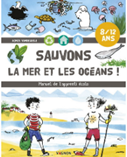 |
Sauvons la mer et les océans : Manuel de l’apprenti écolo par Agnès Vandwiele et Joanna Wiejak (illustrations) |
| Éditions Vagnon, 2018 | |
| Âges 8-12 ans | |
| Ce manuel d'initiation à l'écologie informe sur les enjeux de la mer et sur les actions à mener pour la protéger. Il propose un ensemble de gestes quotidiens à mettre en pratique ainsi qu'une charte des océans et des quiz. | |
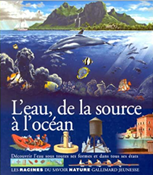 |
L’eau, de la source à l’océan par Costa de Beauregard |
| Éditions Gallimard, 1995 | |
| Âges 9-15 ans | |
| Découvrir avec de l'eau véritable toute l'eau qui recouvre notre Terre et ses qualités magiques. Comprendre les mouvements et les couleurs de la mer. Connaître l'eau menaçante ou menacée, apprendre à la protéger, et goûter tous les plaisirs qu'elle donne. | |
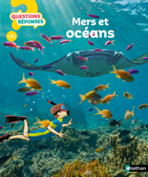 |
Mers et les océans par Anita Ganeri, Christopher Forsey (illustrations) et Brigitte Dutrieux (traduction). |
| Éditions Nathan, 2014 | |
| Âges : dès 7ans | |
| Quelle est la taille d'un océan ? Qu'est-ce qu'un récif corallien ? Quel est le record de plongée ? Comment les poissons respirent-ils sous l'eau ? Toutes les questions essentielles, insolites ou inattendues que se posent les jeunes lecteurs sur la vie sous-marine. Un album documentaire qui allie découverte, surprise et plaisir ! | |
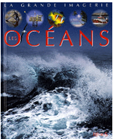 |
Les océans par Sylvie Deraime et Emilie Beaumont, Betti Ferrero (illustrations) |
| Éditions Fleurus, 2011 | |
| Âges : 5-9 ans | |
| Les différents océans, leurs dangers, leurs richesses, les courants et les marées sont présentés. |
| Book | |
|---|---|
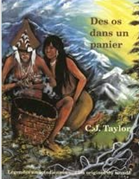 |
Des os dans un panier : légendes amérindiennes sur les origines du monde par C.J. Taylor et Michèle Boileau (traduction) |
| Publié par Livres Toundra, 1994 | |
| Âges : 8-12 ans | |
| Ce très bel album renferme sept légendes amérindiennes sur la création du monde. La nature, dont les manifestations se prêtent à de multiples interprétations, constitue l’élément qui lie les conceptions de ces différents peuples. Un texte clair et agréable qui va à l’essentiel, des illustrations évocatrices qui rendent bien l’esprit surnaturel émanant des croyances ancestrales: voilà les qualités de ce livre qui mérite une place dans toute bonne bibliothèque. | |
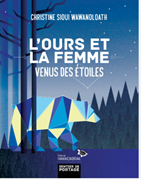 |
L’ours et la femme venue des étoiles par Christine Sioui Wawanoloath |
| Publié par Éditions Hannenorak, 2021 | |
| Âges : 8-12 ans | |
| Il y a de cela bien des lunes, une ourse bleue comme la nuit qui vivait dans le ciel donna naissance à Awassos, un petit ourson dont la fourrure brillait autant que les étoiles. Pour protéger son petit d'un grand chasseur, la mère ourse décida de le déposer sur Terre et de le confier aux esprits de la forêt. Awassos grandit dans ce nouveau monde tout en cherchant un moyen de revenir près de sa mère, qui lui manquait terriblement. Puis il rencontra Mkuigo, une femme-étoile qui lui fit découvrir l'amour et lui permit de devenir… le tout premier homme. | |
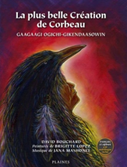 |
La plus belle création de Corbeau = Gaagaagi ogichi-gikendaasowin par David Bouchard, Jason Jones, Nancy Jones, Jana Mashonee (musique) & Brigitte Lopez (illustrations) |
| Publié par Plaines, 2011 | |
| Âges : 6-8ans | |
| Corbeau rêva… et créa les Quatre-pattes, les Ailés, les Rampants. Il continua à rêver… à rêver… et il créa sa plus belle oeuvre jamais réalisée. » (cf. quatrième de couverture). Le disque propose la narration de l’histoire en français, en ojibwa et en anglais | |
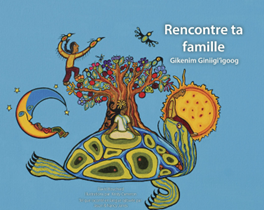 |
Rencontre ta famille = Gikenim Giniigi'igoog par David Bouchard, Kristy Cameron (illustrations), Jason Jones et Nancy Jones. |
| Publié par Medicine Wheel Education, 2021 | |
| Âges: 6-8 | |
| La terre mère, nous venons d'elle, nous allons vers elle et sans elle, nous ne serions pas ici. Elle nous donne à tous la vie et grâce à elle, nous sommes une seule et même famille. Dans presque tous les segments de la vie autochtone, on parle de la terre mère, du père ciel, du grand-père soleil et de la grand-mère lune. L’oeuvre Rencontre ta famille est un poème rythmé de David Bouchard qui fera découvrir aux lecteurs ces personnages importants et mettra en lumière un concept plus large de la vision du monde, celui de la famille naturelle |
| Book | |
|---|---|
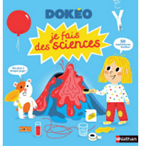 |
Je fais des sciences par Cécile Jugla et Jack Guichard |
| Publié par Nathan, 2018 | |
| Âges : 4-9 ans | |
| La science à la portée des petits! Avec des expériences faciles à faire à la maison! Un jeu et des expériences à chaque page. | |
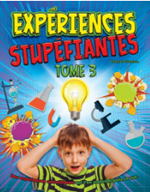 |
Expériences stupéfiantes : des expériences scientifiques qui t’en mettront plein la vue. Tome 3 par Thomas Canavan. |
| Publié par Broquet, 2016 | |
| Âges : 4-9ans | |
| Des fusées chimiques aux catapultes de table, et des pommes momifiées jusqu'aux oeufs rebondissants, ce livre regorge d'expériences fascinantes! Tu découvriras à l'intérieur une multitude de projets amusants avec des instructions faciles à suivre, des photos et des diagrammes clairs, étape par étape. Tu y trouveras des explications simples sur la façon dont tout fonctionne. C'est le guide pratique parfait pour les jeunes scientifiques! | |
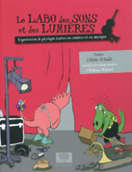 |
Le labo des sons et des lumières : expériences de physique hautes en couleur et en musique par Alain Schuhl et Hélène Maurel (illustrations) |
| Publié par Le pommier, 2010 | |
| Âges : 8-15 ans | |
| Une façon ludique de découvrir la chimie et la physique en suivant les expériences de deux monstres, Sakharoze et Sakharine. Des expériences simples à réaliser, des rubriques sur le fonctionnement de phénomènes physiques, des pages pour fabriquer un instrument de musique. | |
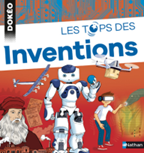 |
Le tops des inventions par Joël Lebeaume et Stéphan Julienne (illustrations) |
| Publié par Nathan, 2018 | |
| Âges : 8-12 ans | |
| Une présentation claire et dynamique (une à deux pages par sujet) pour découvrir 100 inventions géniales : calendrier, imprimerie, avion, jeu vidéo, intelligence artificielle, robots, drones, nettoyeur d’océan, SMS, cloud, hyperloop, tissus intelligents… Tout ce qui a fait le monde où nous vivons, et tout ce qui prépare celui de demain ! |